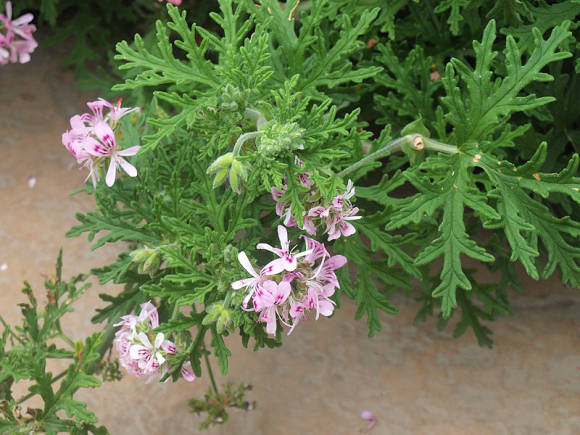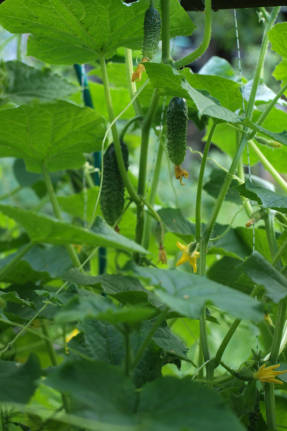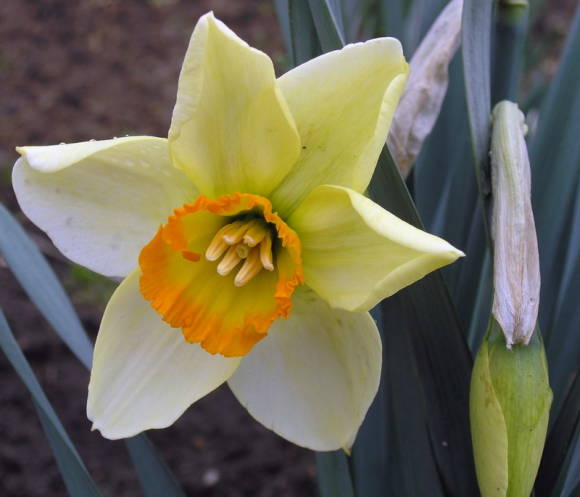
Ficus rubbery, or elastic (Ficuselastica) is, perhaps, the most popular potted crop, has long been considered a tree of family well-being.
At home, in northeastern India and southern Indonesia, this evergreen plant grows into a large tree 30 m in height. Revered as a sacred plant by local Buddhists.
In open ground conditions, this species grows in countries of climatic zone 10 and above. In Europe it has been cultivated since 1815, in the Mediterranean - in the open air, to the north - only in indoor conditions.
At the beginning of life, it is a single-stemmed unbranched tree. As it grows, it begins to branch, air roots form on the trunks and branches, which, in a warm and humid climate, reaching the ground, form new trunks and form a banyan tree. Thanks to aerial roots, it received another name - "snake tree". Leaves are large, elliptical, up to 30 cm, leathery, pointed at the ends, dark green, alternate. The young leaf has a reddish-brown hue and a stipule of the same color, which quickly falls off and leaves a characteristic circular scar on the branch. The flowers are of no decorative value; they are pollinated, like other ficuses, by insects of a certain type. In room culture, f. rubbery does not bloom, but sometimes blooms at a venerable age in spacious winter gardens, then forming spherical, about 1 cm in diameter, fruits (syconia). They resemble tiny figs, but are inedible.
White dots of milky juice often appear on the leaf plate. In the recent past, this ficus, like hevea, was grown for the industrial production of rubber, which is still indicated by the names "rubber tree", "rubber bush". Milky juice has an irritating property, when it comes into contact with the skin, it can cause dermatitis or allergies, it contains latex, alkaloids, enzymes. Its purpose for the plant itself is to heal wounds and protect against attack by predators.
Ficus rubber care

Priming rubber ficus prefers fertile and porous. It is advisable to add sod land, leaf humus, sand to the purchased peat land.
Transplant young plants are needed every year, in spring or early summer, as the entire clod of earth is filled with roots. Ficus responds very well to handling in a larger pot and begins to grow actively.
Read more in the article Transplanting indoor plants.
In room conditions, rubber ficus should receive a lot of light (bright diffused light is optimal). It can put up with some shading, but in this case, the growth rate drops sharply. If the plant has stood for a long time in a dark place, its lower leaves begin to turn yellow and fall off. Plant warmly, tolerates heat quite well, but requires frequent spraying on hot days. In summer, a temperature of + 25 ... + 28 ° C is desirable for him.
In winter, in a lack of light it is necessary to lower the temperature of the content to + 16 ... + 18оС and reduce watering. Provide frequent spraying in rooms with central heating. The minimum temperature threshold for this plant is + 13 ° C, but withstands a short-term drop to + 5 ° C. It does not tolerate cold drafts, especially on a wet coma of earth, which is why the leaves can become covered with brown spots and crumble.
Watering neat, moderate, after drying of the substrate by 1-2 fingers. With waterlogging, excessive leaf fall is observed. Usually, before leaf fall, the edges of the leaves are covered with brown spots, this serves as the first signal of danger.
Ficus leaves must be kept clean, periodically wiped with a damp cloth to restore their gloss, clean the stomata, and allow them to breathe and photosynthesize normally.
Pruning... With growth and aging, the lower leaves gradually die off, the trunk becomes bare.To give more foliage and contain the plant in a certain size, it is necessary formative pruning, optimally - at the end of winter. If you carry out a slight pruning and cut off only the top of the shoot, the ficus will not branch, only one of the uppermost buds will wake up. To obtain a lush, branched bush, you must cut off at least 5-6 upper internodes.
There is another way to force the rubber plant to give lateral shoots. The trunk is tilted as much as possible and fixed in this position. In this case, the dominance of the apical kidney is replaced by the lateral one, which turns out to be the highest. The crown will stop growing, this lateral bud will wake up and begin to grow, after which you can return the plant to its original position.
Reproduction... The apical cuttings left over from pruning can be rooted and young specimens can be obtained. Ficus rubbery easily propagated by cuttingsespecially with bottom heating. Before rooting, it is necessary to hold the cut of the cutting under running water until the release of milky juice stops. You can read more about rooting cuttings in the article Cutting indoor plants at home.
Reproduction is possible air layering... To do this, a vertical incision 0.5 cm long is made on the stem under the leaf and a match is stuck into it, after dusting it with Kornevin powder. A bunch of wet sphagnum moss is tied on top, covering it with a film. When, after a few months, the roots become visible through the film, the cut is cut below the formed root system and planted in a separate pot.
Rubber ficus, with proper care, is a fairly persistent and durable plant that can live up to 50 years. Brown spots on the leaves, yellowing of the leaves and excessive leaf fall are the result of improper watering (too dry or too wet), cold drafts, and lack of light. It is a little susceptible to diseases and pests, but it can be attacked by scale insects, false scale insects, thrips, mealybugs, aphids, spider mites. Plant protection issues are discussed in detail in the article Houseplant pests and control measures.
Popular varieties of rubber ficus
Ficus rubber has many different varieties, all of them are more compact than the natural look. The most common varieties of this ficus are:
- Robusta with wide green leaves, unpretentious.
- Belize has three colors in color, green in the center, white and pink along the edge, unpretentious, more demanding on light than the Robusta variety.
- Tineke has a green center, irregular spots of pistachio and white along the edge, similar to the Belize variety, but more capricious. If the rules of maintenance are not followed, brown spots appear on the white areas of the sheet.
- Abidjandjan) with a maroon leaf color, unpretentious.
- Black Prince with very dark leaves, almost black, unpretentious.
- Melany with relatively small (about 20 cm) dark green leaves, often bushy, unpretentious.
 |  |
All variegated varieties have a lower content of chlorophyll in the leaves, therefore, they are more whimsical in content, demanding on lighting, and take root worse when cuttings. But they can be propagated by air layers.
The main supplier of rubber ficus to our flower market is Holland. On sale you can find all the varieties described, the size of the plant ranges from very small, a few centimeters, to large-sized 2.5-3 m in height, single-barreled or multi-barreled. For home maintenance, small and medium-sized copies are purchased, large-sized ones are often used for landscaping offices, commercial premises. Due to the presence of irritating milky juice, it is not recommended to use rubber ficus in children's institutions.
Other types of ficuses - in the encyclopedia on the page Ficus,
in articles Ficus Benjamin - a variety of varieties and subtleties of care
Sacred ficus in the homeland of Buddha and in indoor conditions









